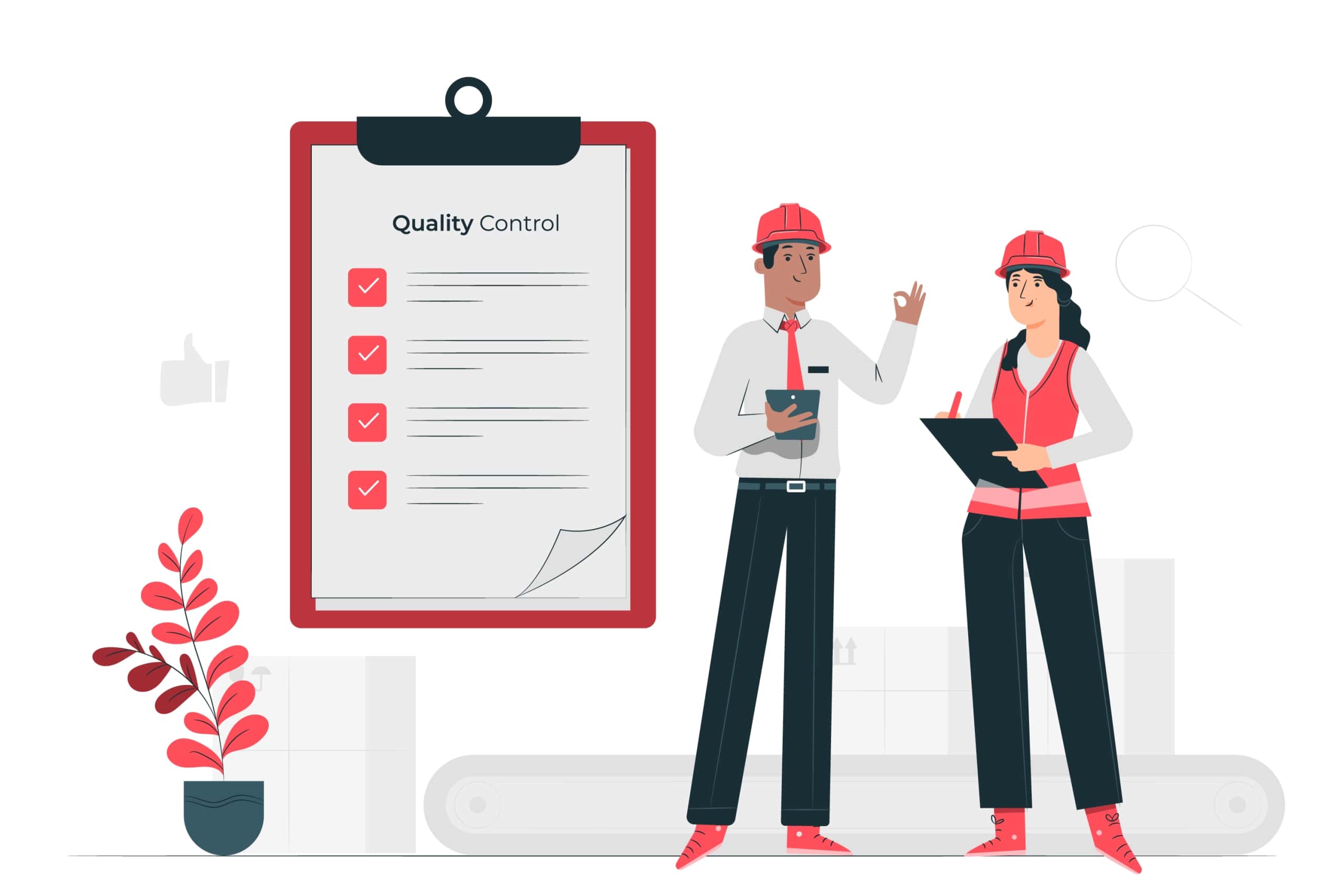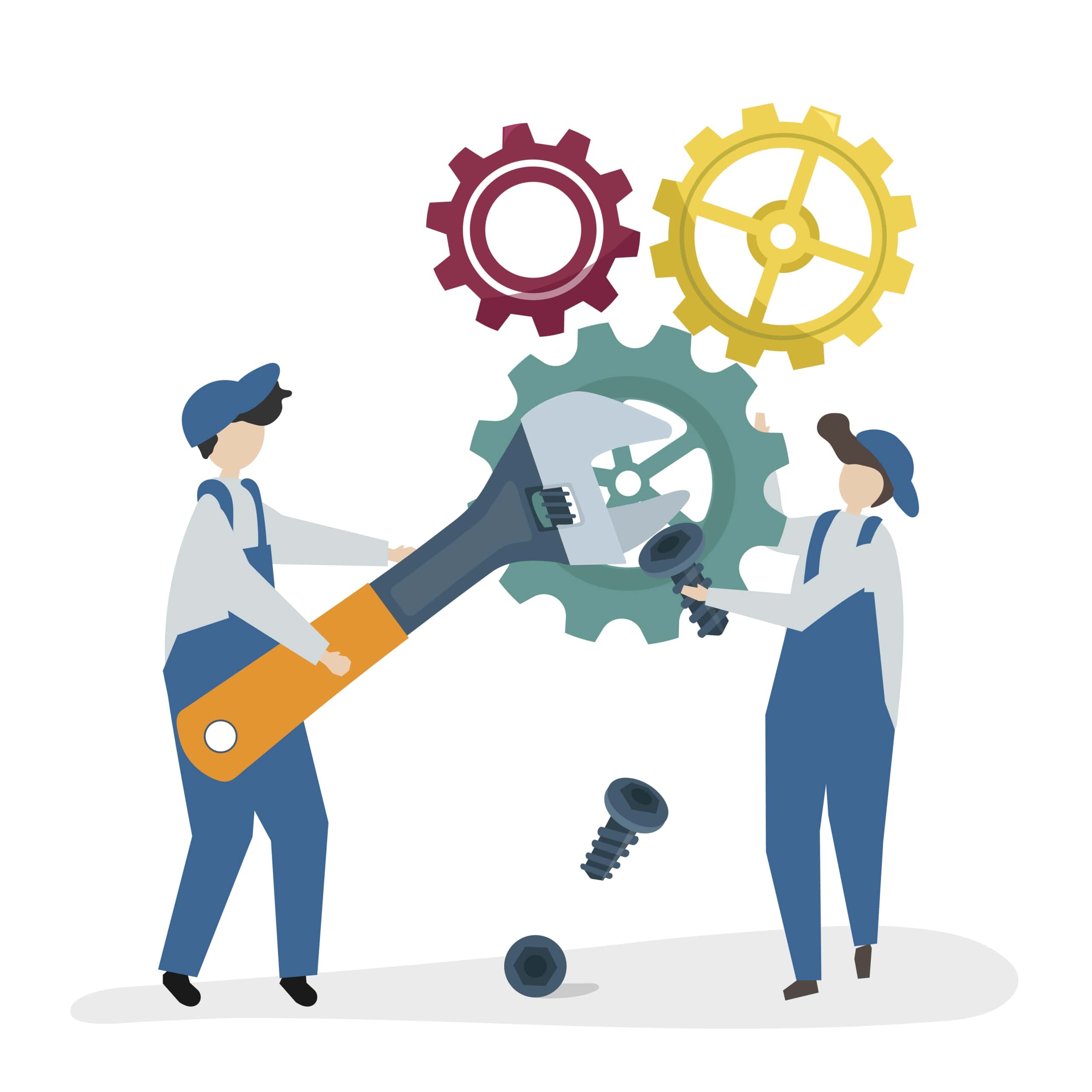#1: Quality Concerns
When looking for a wet wipes machine, it’s crucial to prioritize top quality to ensure consistent product quality and continuous wet wipes production. In this article, we will explore the quality issues related to buying a used wet wipes machine:
- Degradation:
Wet wipes machines that have been previously used in rigorous production contexts will unavoidably experience wear and tear over time. Seals, bearings, and moving components may have degraded significantly, resulting in reduced performance and dependability. Prolonged wear may lead to frequent malfunctions, heightened maintenance needs, and eventually, reduced productivity.
- Maintenance History:
The maintenance record of a pre-owned wet wipes machine is critical for assessing its general condition and operational abilities. Wet wipes machines that have not been adequately maintained or serviced at regular intervals are more prone to experiencing operational problems and mechanical breakdowns. Without adequate maintenance records, evaluating the actual state of the equipment becomes difficult, leading to a higher likelihood of unforeseen failures and expensive repairs.
- Product Quality:
The quality of wet wipes produced by a wet wipes machine is closely linked to its condition and performance. An imprecise and inconsistent wet wipes machine may result in low-quality wipes with compromised texture, moisture content, and efficacy. Improperly serviced equipment might contaminate wipes with pollutants, jeopardizing their cleanliness and safety. Ensuring superior product quality is crucial for satisfying customer demands and protecting your brand’s image.
- Performance Reliability:
Consistent performance is essential for achieving production goals and maintaining operational effectiveness. Used wet wipes machines may have inconsistent performance due to worn-out parts, obsolete technology, or insufficient calibration. Unforeseeable performance fluctuations may result in delays in production, workflow bottlenecks, and higher material waste. Evaluating the wet wipes machine’s performance dependability via comprehensive testing and inspection is crucial to reducing the likelihood of production interruptions.
- Upgradability and Scalability:
Adapting and expanding production capacity is crucial for maintaining competitiveness in the fast-changing market. Older, secondhand equipment may not possess the necessary flexibility and adaptability needed for future growth or technological updates. Acquiring a wet wipes machine with restricted upgradability may impede your capacity to adapt to evolving market needs and technical progress, thus restricting your company’s expansion prospects.
Quality problems impact the performance, dependability, and durability of a wet wipes machine. Comprehensive examination is essential for making an educated selection when buying secondhand equipment, including detecting wear and tear, reviewing maintenance history, and considering product quality. By focusing on quality and dependability, businesses may reduce risks, improve manufacturing processes, and consistently supply high-quality wet wipes to fulfill customer expectations.
#2: Compatibility Issues
Compatibility concerns may greatly hinder the smooth integration and effectiveness of a pre-owned wet wipes machine in your manufacturing process. This is an in-depth analysis of the compatibility issues related to buying a used wet wipes machine.
- Technology Integration:
Recent technological advancements have revolutionized the production process of wet wipes by bringing in new features and automation to enhance efficiency and improve product quality. However, older and second-hand wet wipes machines may not be compatible with modern technology, making it difficult to integrate them into your current production line. Compatibility concerns can arise across software systems, control interfaces, and data communication protocols, which can hinder synchronization and data exchange between various components of the manufacturing process.
- Production Workflow:
Each wet wipes manufacturing line is unique and specifically designed to cater to particular workflow requirements to enhance efficiency and productivity. Purchasing second-hand equipment that does not align with your production process can cause disruptions and inefficiencies. The physical dimensions of the machine, conveyor speeds, and output capacity should be compatible with other equipment in the production line to maintain efficient material flow and reduce bottlenecks. It is crucial to evaluate compatibility with your current production system to prevent costly alterations or process overhauls.
- Spare Parts Availability:
Having replacement parts readily available is crucial for maintaining continuous operation and guaranteeing timely maintenance of the wet wipes machine. Older versions may have outdated or discontinued components, which might make it difficult to get replacement parts when necessary. Compatibility problems may occur when trying to replace original components with aftermarket options, which might impact the performance and dependability of the wet wipes machine. Assessing replacement parts’ availability and compatibility with the wet wipes machine is crucial for reducing downtime and managing maintenance risks.
- Maintenance and Service Requirements:
Compatibility concerns extend beyond manufacturing processes and include maintenance and service requirements. Different types of equipment may require varying maintenance schedules, lubrication needs, and troubleshooting methods that should be in line with your operating skills and resources. It is critical to have technical support and service providers who are knowledgeable about the specific make and model of the used equipment to effectively deal with maintenance challenges. Ensuring that your maintenance infrastructure and support network are compatible is crucial to retaining the best wet wipes machine performance and minimizing downtime.
- Scalability and Future Expansion:
Investing in a wet wipes machine that can scale and adapt to future expansion prospects is crucial. Outdated equipment can limit your ability to increase production capacity or introduce new features to meet changing market needs. It’s essential to evaluate the machine’s compatibility with modular upgrades, expansion possibilities, and technological improvements to ensure the longevity of your investment and optimize long-term returns.
Compatibility difficulties include important factors necessary for smoothly incorporating a pre-owned wet wipes machine into your manufacturing line. Ensuring compatibility is crucial for enhancing operational efficiency, reducing downtime, and maximizing ROI by aligning technological integration, manufacturing process, spare parts availability, and scalability. Businesses may reduce risks and guarantee the smooth integration and operation of a used wet wipes machine in their industrial environment by thoroughly assessing compatibility considerations throughout the acquisition process.
#3: Limited Warranty and Support:
Buying a used wet wipes machine usually means receiving less warranty coverage and assistance than if you were to buy a new one. It is essential to comprehend the consequences of these constraints to reduce dangers and guarantee the enduring dependability of your production equipment. Let’s explore the consequences of a limited warranty and support when purchasing a second-hand wet wipes machine.
- Warranty Coverage:
When purchasing a pre-owned wet wipes machine, one of the major issues to consider is the limited warranty coverage. Unlike new wet wipes machines, used ones may have expired or limited warranties, which can leave you vulnerable to potential malfunctions or faults. In the absence of warranty coverage, you may be required to bear the costs for repairs, replacements, and troubleshooting, which can result in unforeseen expenses and financial constraints.
- Technical Support:
Having access to reliable technical support is essential for resolving operational issues, identifying faults, and improving wet wipes machine performance. When it comes to used equipment, it may not come with specialized technical assistance or manufacturer support, which can make it challenging to efficiently address complex problems. Failure to receive prompt and specialized assistance can result in extended periods of inactivity, reduced efficiency, and increased dissatisfaction among your manufacturing team. Therefore, it is crucial to evaluate the availability of technical support options and expertise in servicing the specific make and model of the used equipment to minimize downtime and optimize operational efficiency.
- Spare Parts Availability:
Ensuring the availability of spare parts is crucial for the smooth functioning of a wet wipes machine throughout its operating life. In the case of older secondhand equipment, it may be challenging to find obsolete or rare components, which can result in extended downtime, delayed repairs, and poor machine performance. This can ultimately impact production schedules and output quality. Therefore, it is essential to assess the availability of replacement parts and explore alternate sourcing options to reduce risks and ensure the uninterrupted functioning of the used equipment.
- Self-Maintenance:
RequirementsIf a company lacks comprehensive warranty coverage and technical assistance, it may have to rely on internal resources for maintenance and troubleshooting. However, self-maintenance requires a certain set of skills, resources, and time dedication to handle problems and perform regular service duties properly. Investing in training programs for maintenance workers and developing robust maintenance processes can enable your team to manage maintenance tasks successfully, reducing the need for external help and minimizing downtime.
- Risk Mitigation Strategies:
Businesses may reduce the risks related to the limited warranty and support for used wet wipe machines by using several solutions. Begin by doing a comprehensive examination of the machine’s state and maintenance records to pinpoint any possible problems. Secondly, consider investigating the possibility of buying extended warranty coverage or service contracts from third-party sources. Thirdly, be sure to acquire necessary replacement parts and consumables in advance to reduce the amount of time equipment is out of service. Fourth, provide resources to training programs for maintenance workers to improve their skills in diagnosing and repairing the equipment efficiently. Finally, create detailed maintenance procedures and schedules to handle maintenance jobs in advance and extend the machine’s lifetime. Businesses may reduce risks, enhance operational efficiency, and guarantee the long-term durability of their manufacturing equipment by using these measures.
When purchasing a used wet wipes machine, it is essential to evaluate the warranty coverage and technical support provided. By taking risk mitigation measures, businesses can reduce downtime, improve operational efficiency, and ensure the long-term durability of their manufacturing equipment. In order to maximize return on investment and remain competitive in the wet wipes manufacturing industry, it is important to strike a balance between cost reduction and wise investment in warranty coverage, technical assistance, and spare parts inventories.
#4: Regulatory Compliance
Regulatory compliance is crucial in the wet wipes manufacturing business to maintain safety, quality, and consumer protection regulations. An in-depth analysis of the significance of regulatory compliance and its ramifications when buying a used wet wipes machine.
- Adherence to Safety Standards:
Regulatory organizations have established strict safety requirements and recommendations to ensure that customers are protected from any health hazards when using wet wipes. These standards cover various aspects, including the composition of the product, chemical safety, packaging materials, and labeling regulations. If you are considering purchasing a used wet wipes machine, it is essential to ensure that it meets current safety requirements. Failure to do so could result in significant dangers such as chemical exposure, allergic reactions, or microbiological contamination. Therefore, it is crucial to verify that the machine complies with relevant safety rules and has completed all required certifications and compliance tests.
- Hygiene and Sanitation Regulations:
Hygiene and sanitation rules specify the production procedures and cleanliness requirements required to create safe and sanitary wet wipes. Secondhand machinery must follow rigorous hygiene practices to avoid cross-contamination, microbiological proliferation, and product adulteration. Noncompliance with hygiene rules may lead to product recalls, legal responsibilities, and harm to brand image. It is crucial to evaluate the cleanliness of the machine, sanitation methods, and compliance with hygiene requirements to reduce the risk of non-compliance and guarantee product safety.
- Environmental Regulations:
Environmental rules control waste disposal, chemical usage, and energy use in production to reduce environmental effects and encourage sustainability. Outdated equipment may not adhere to modern environmental regulations or have energy-efficient features, resulting in higher resource use and environmental contamination. Evaluating the machine’s environmental impact, waste management procedures, and adherence to environmental laws is crucial for reducing environmental hazards and meeting sustainability goals.
- Labeling and Packaging Requirements:
Regulatory authorities require wet wipe manufacturers to follow specific labeling and packaging guidelines to ensure that consumers receive accurate information about product content, usage instructions, and safety precautions. If you are using previously owned machines, it is crucial to ensure that they can produce wet wipes that comply with labeling laws and that the product labels are clear, precise, and easy to read. Failure to comply with labeling regulations may result in regulatory penalties, customer misunderstanding, and product removal from the market. Therefore, verifying that the machine can support customizable labeling features and manufacture wipes that meet regulatory labeling requirements is essential.
- Certification and Documentation:
When buying a used wet wipes machine, it is essential to ensure full paperwork and verify certifications in addition to satisfying regulatory norms. Documentation, such as certificates of conformity, test reports, and production records, serves as proof of meeting regulations and ensuring product quality. Inadequate paperwork or certification may suggest non-compliance with regulations or inadequate quality control techniques. It is crucial to do due diligence on the machine’s certification status and examine pertinent paperwork to guarantee regulatory compliance and reduce legal and operational risks.
When buying a second-hand wet wipes machine, it is crucial to examine regulatory compliance to maintain safety, quality, and consumer protection requirements. Businesses may reduce regulatory risks, ensure customer health, and maintain legal compliance by adhering to safety standards, hygiene laws, environmental requirements, labeling guidelines, and certification documents. Emphasizing regulatory compliance throughout the procurement process is crucial for establishing customer confidence, safeguarding brand reputation, and promoting sustained success in the wet wipes manufacturing sector.





